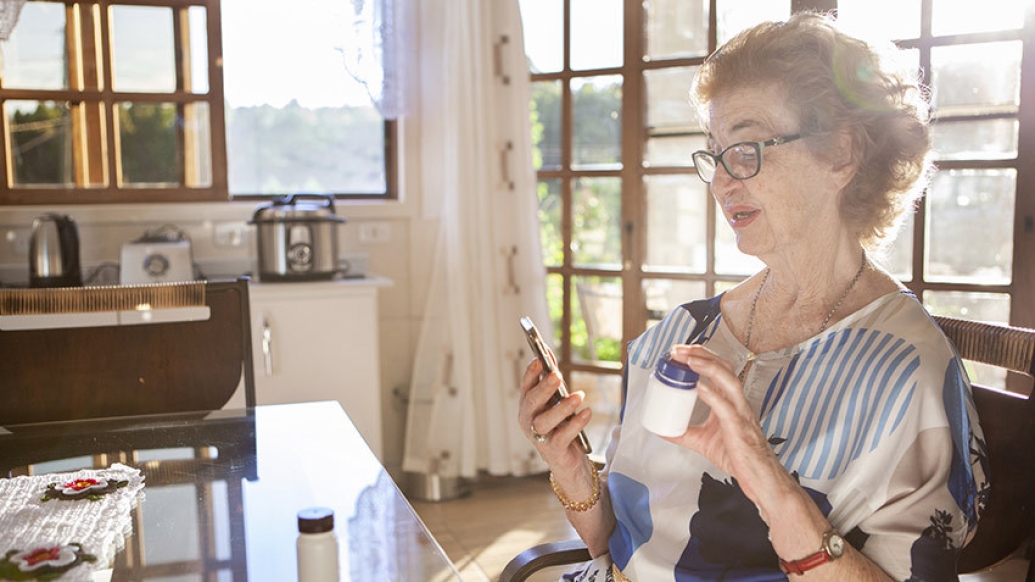A new study assesses the relationship between telehealth use among primary care practices across the state and preventable ER visits and hospitalizations.
1:31 PM
Author |

This article was last updated on April 25, 2022.
When COVID-19 hit Michigan in the spring of 2020, primary care practices across the state – spurred by a series of federal and state policy and regulatory changes – shifted rapidly from in-person to virtual visits for non-essential medical services. A new study of data from patients across Michigan shows the impact of this shift.
While telehealth has played a key role in continuing care for many patients during the pandemic, little is understood about its impact on offsetting declines in access to primary care and preventing negative health outcomes associated with those declines.
In a recent research and policy brief, a University of Michigan team analyzed the relationship between telehealth adoption levels among primary care providers across the state and emergency department visits and hospitalizations for ambulatory care sensitive conditions, which are conditions, such as urinary tract infections, diabetes complications, and pneumonia, for which hospitalization could be prevented by access to and early interventions in primary care. The team published their findings in JAMA Network Open in March 2022.
"One big question in telehealth research and policy is what the impact of shifting so much care from in-person to telehealth is on patient outcomes – is telehealth an adequate substitute? Where might disparities persist?" says Kathleen Li, M.D., M.S., lead author of the study, a lecturer in the Department of Emergency Medicine at Michigan Medicine, and a scholar at the U-M Institute for Healthcare Policy & Innovation. "The pandemic provided a natural experiment to examine these questions, and the goal of our study was to provide an early look at this on a population level."
Li and colleagues used claims data from a major commercial insurer, Blue Cross Blue Shield of Michigan, to determine differences in telehealth adoption across over 4,000 primary care practices in Michigan from March to September 2020. They also compared data from the same period in 2019.
The team found telehealth was used to provide 59% of primary care visits at the April 2020 peak of the first COVID-19 wave in Michigan – a rapid rise from the previous year. Despite this, the number of primary care visits declined sharply during the first few months of the pandemic. Total visits from March to May 2020 fell to as low as 47% of the number of visits in the same period in 2019.
The study also showed that only 63% of smaller primary care practices and 61% of those in rural areas of Michigan used some degree of telehealth during the pandemic, compared to 91% of larger practices and 73% of those in urban areas. This suggests that small and rural practices, or their patients, face barriers to telehealth adoption that could worsen health disparities in a large portion of the state.
"Our findings indicate that the use of telehealth visits to replace in-person visits only partially made up for the overall decline in primary care visits, meaning that many Michiganders, especially those in rural areas, may have had more limited access to primary care and therefore, may have been at higher risk for negative health effects amid the pandemic," explains Li.
A strong relationship was not found between rates of telehealth adoption among primary care practices and rates of hospital visits for these sensitive conditions among their patients. Practices with the greatest proportion of telehealth visits showed slightly higher rates of hospitalizations and ED visits for these conditions (2.10 per year per 1000 people.) No significant differences in ED visit or hospitalization rates were found among practices that conducted a moderate amount or very few to no telehealth visits.
"Although practices that used more telehealth during the early months of the COVID-19 pandemic experienced slightly higher rates of ED visits and hospitalizations for ambulatory care sensitive conditions, this period of time coincided with unprecedented fluctuations in care utilization in Michigan and across the country," says co-author Chad Ellimoottil, M.D., M.S., director of the U-M Telehealth Research Network, and an assistant professor of urology at Michigan Medicine. "While more research is needed, our findings show that the impact of telehealth on downstream hospitalizations and emergency room visits may not be as large as either proponents or critics of telehealth have suggested."
The U-M Institute for Healthcare Policy & Innovation supported the team's work as part of its Policy Sprint initiative. Li and Ellimoottil's co-authors were Sophia Ng, Ph.D., of IHPI, Jeff McCullough, Ph.D., associate professor of health management and policy at the School of Public Health, Ziwei Zhu, M.S., of the Department of Urology, and Keith Kocher, M.D, M.P.H., associate professor of emergency medicine at Michigan Medicine.
Policy brief cited: "Telehealth Use in Michigan During COVID-19: Variation in Primary Care Telehealth Adoption and its Impact on Emergency Department Use and Hospitalizations."
Study cited: "Association Between Primary Care Practice Telehealth Use and Acute Care Visits for Ambulatory Care-Sensitive Conditions During COVID-19," JAMA Network Open. DOI: 10.1001/jamanetworkopen.2022.5484

Explore a variety of healthcare news & stories by visiting the Health Lab home page for more articles.

Department of Communication at Michigan Medicine
Want top health & research news weekly? Sign up for Health Lab’s newsletters today!





